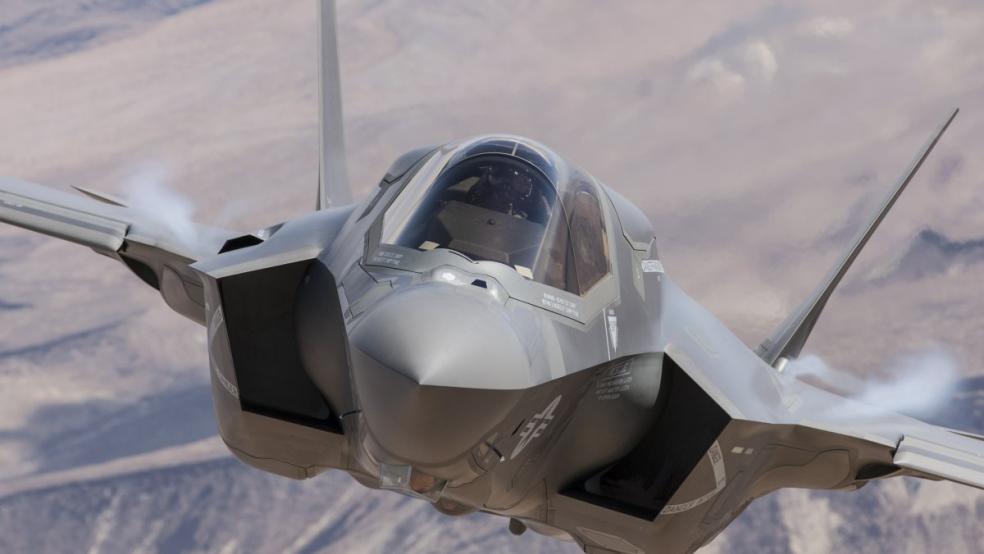The Department of Defense reported this week that its current major weapons acquisition programs will ultimately cost about $1.89 trillion, roughly $105 billion more than the previous estimate.
Spending on major weapon systems -- including the F-35 Joint Strike Fighter and the Navy’s Ford-class nuclear aircraft carriers -- is on a steadily rising trajectory, posing huge funding challenges for the Trump administration and Congress.
Related: F-35 Total Costs Climb Past $1.5 Trillion — How High Will They Go?
For the December 2016 reporting period, the Pentagon incurred a net cost increase of $98.9 billion, or 5.81 percent, for the 80 major weapon systems in production. That list of military hardware and weapons systems has grown by seven or more programs, with added cost implications.
The Defense Department said in its report that the cost increases were due primarily to net increases in the planned quantities to be purchased, engineering changes to hardware and software, and a “net stretch-out” of development and procurement schedules.
The overall F-35 program cost, for example, increased by $27.4 billion, or 6.81 percent, last year, from $379 billion to $406.5 billion. The Navy’s DDG 51 Arleigh Burke-class guided missile destroyer program cost increased by $4.2 billion, or 4 percent, from $106.8 billion to $111.1 billion. And the Army’s UH-60M Black Hawk helicopter program cost jumped $1.36 billion, or 5.12 percent, from $26.6 billion to $28 billion.
The new Department of Defense report provides details of major defense acquisition costs and schedules and performance changes since the December 2015 reporting period. The latest report is based on a comprehensive annual Selected Acquisition Reports (SARS) for the first quarter of fiscal 2017, as updated by President Trump’s fiscal 2018 budget submission in May.
Related: How Impatience at the Pentagon Is Wasting Billions in Taxpayer Dollars
Trump took office vowing to overhaul and modernize the military, to enhance the nation’s readiness and project a force throughout the globe second to none. “I’m going to make our military so big, so powerful, so strong that nobody – absolutely nobody – is gonna mess with us,” Trump said during the campaign.
He at one time called raising the number of active Army troops from 475,000 to 540,000, boosting the number of Marine battalions from 24 to 36, enlarging the naval fleet from the planned 280 to 350, and increasing the number of Air Force fighter aircraft to at least 1,200. The president also vowed to modernize the country’s missile defense and cybersecurity program.
Trump called for lifting the legal caps on defense and boosting spending by 10 percent or more beginning in fiscal 2018, as part of his budget submission to Congress this spring. Many defense hawks, including Sen. John McCain (R-AZ) and Rep. Mac Thornberry (R-TX), the chairmen of the House and Senate Armed Services Committees, have pressed for even more.
On Wednesday night, the House Budget Committee approved a fiscal 2018 budget resolution that topped Trump’s defense spending request. The proposed budget calls for a defense base budget of $621.5 billion next year for personnel, contracting and general operations, and $75 billion more for U.S. military action in Iraq, Afghanistan and other hot spots.
Gordon Adams, a military analyst and American University professor emeritus, said in an interview Thursday that there are a number of factors that contribute to rising weapon system costs – both strategic and economic – but that raising the spending caps provides added incentive for Pentagon planners to expand the number of defense contracts and programs.
“It heightens appetites inevitably,” he said in an interview. “The services are being told to plan projects that are above the Budget Control Act caps ... Right now the services expect to have more money than is available under the caps. If they expect to have more money in the five-year defense plan, they start building a program that is larger than the budgets will accommodate under the caps.”





